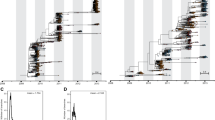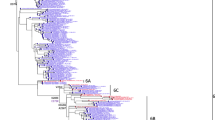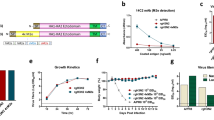Abstract
Advance warning of pathogen outbreaks has not been possible heretofore. A new class of genomic peptides associated with rapid replication was discovered and named replikins. Software was designed to analyze replikins quantitatively. Replikin concentration changes were measured annually prior to, and “real time” every few days during, the 2009 H1N1 influenza pandemic. Replikins were seen by both linear sequence representation and three-dimensional X-ray diffraction, and found to expand on the virus hemagglutinin surface prior to and during the H1N1 pandemic.A highly significant increased concentration of virus replikins was found a) retrospectively in three pandemics from 1918 to 1999 (14,227 sequences)(p<0.001), and b) prospectively before the H1N1 2009 pandemic (12,806 sequences) (in the hemagglutinin gene (N=8,046), p values by t-test = 1/10130, by linear regression = 1/1024 and 1/1029, by Spearman correlation < 2/1016, by Wilcoxon rank sum<1/1016, by multiple regression adjusting for correlation between consecutive years = 2/1022. Rising replikin concentration in H1N1 from 2006 to 2008, predicted one year in advance the H1N1 outbreak of 2009; and in H5N1, predicted the lethal outbreaks of H5N1 1997-2010.The possible combination of influenza strains H1N1 (high infectivity) and H5N1 (high lethality) is a matter of global concern (1,2). The risk of a combined H1N1 (high infectivity) - H5N1 (high lethality) outbreak may have increased because first, the Replikin Counts of the two virus strains have risen simultaneously, not seen previously; second, the rise is to the highest levels recorded since 1918 for H1N1, in Mexico (16.7), and since 1957 for H5N1, in Egypt (23.3); and third, clinical outbreaks of each strain are occurring in 2011. These simultaneous conditions may increase the risk that the two virus strains might come into contact with each other more frequently, facilitating transfer of genomic material to form a hybrid.
Similar content being viewed by others
Article PDF
Author information
Authors and Affiliations
Corresponding author
Rights and permissions
About this article
Cite this article
Bogoch, S., Bogoch, E. Prediction of specific virus outbreaks made from the increased concentration of a new class of virus genomic peptides, replikins.. Nat Prec (2011). https://doi.org/10.1038/npre.2011.6279.1
Received:
Accepted:
Published:
DOI: https://doi.org/10.1038/npre.2011.6279.1



